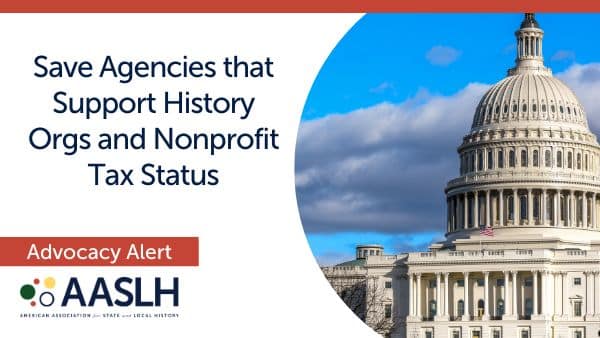
Over the weekend, I was having a conversation with my husband, who works for a regional financial institution. He told me that his company recently hired a Chief Storyteller. Their job is to travel throughout their region to gather stories from fellow employees and clients about how they used the bank to achieve financial confidence. They have a specific website (separate from their official company website) that promotes the idea of financial confidence with tools to sell this part of the company’s mission; these inspirational stories are the main focus. (I can’t link to the website due to privacy regulations for employees of the financial institution where my husband works.)
I was fascinated by the idea of a Chief Storyteller—someone whose job is to talk about mission impact—and the implications of this role for history organizations. I started doing some research (i.e. Google search) and learned that this is a current trend in marketing for many companies, although Nike has employed a Chief Storyteller since the late 1990s. These positions usually fall into the marketing department and help focus brands on their overall mission. They also help companies define their relevancy to the public by showing the impact they have on real people.
So what do these companies mean by the term “storytelling?” The Chief Storyteller for Microsoft explained it this way: “Storytelling is not selling directly–it’s social selling, selling indirectly, selling using the power of content.” Microsoft uses storytelling to humanize their brand.

Storyteller by Anker Grossvate, 1884
I would argue that history organizations need to embrace this idea of social selling; history is a brand that needs humanizing in today’s culture. After all, we are in the business of telling stories. We tell stories all the time, but they look toward the past. We’re not as experienced or effective at telling stories about how our institutions impact our contemporary communities. Do you regularly collect stories that show the impact of your work, how it is connected to your mission, and how it makes you relevant to today’s world?
The History Relevance Campaign is a great example of why telling compelling stories about our impact is so important. The History Relevance Campaign is a diverse group of history professionals posing questions about what makes the past relevant today. They aim to serve as a catalyst for demonstrating, discovering, and promulgating the value of history for individuals, communities, and the nation.
In order to show the importance of the relevance of history, this group has been seeking stories from history organizations about their impact, but finding those stories has proved to be difficult. History organizations need to learn from the for-profit world and social services nonprofits about the importance of sharing the stories of our impact on society.
Here are four strategies for becoming your organization’s Chief Storyteller from inc.com:
- Be intentional about the story you write.
- Take advantage of the opportunity before someone else does.
- Take an open approach.
- Humanize yourself.
These tips can help us think about telling our organization’s story in a different light. Corporate storytelling lives on if it is done right.
Rachel Spielman writes, “Those stories we painstakingly research, piece together and build are nothing short of treasures! And yes, attention in the digital age is short-lived, but great stories aren’t. The stories that matter are memorable; they live on in your connection and loyalty to a brand, company, or an individual. And the more of these meaningful stories you tell, the stronger that connection becomes.”4
How can the history field reframe our “elevator speech” or typical luncheon presentation to focus less on who we are and what we do and more on our impact on society? If we can do this, we can ensure our institution’s story lives on.
I challenge you to do some reading on the Chief Storyteller trend and think about how you can incorporate it into your history organization. After you have thought about it, visit the History Relevance Campaign website and connect to their Impact Project. Sharing your story will help raise the profile of history organizations across the board.
Bethany L. Hawkins is the Chief of Operations for the American Association for State and Local History. She can be reached at [email protected].
Want to write for AASLH? Learn more and submit a post here.
Online Resources about Chief Storytellers
- Why Every Business Needs a Chief Storyteller
- 4 Strategies for Becoming Your Own Chief Storyteller
- Video from Kentucky Historical Society about their new History Advocate position



